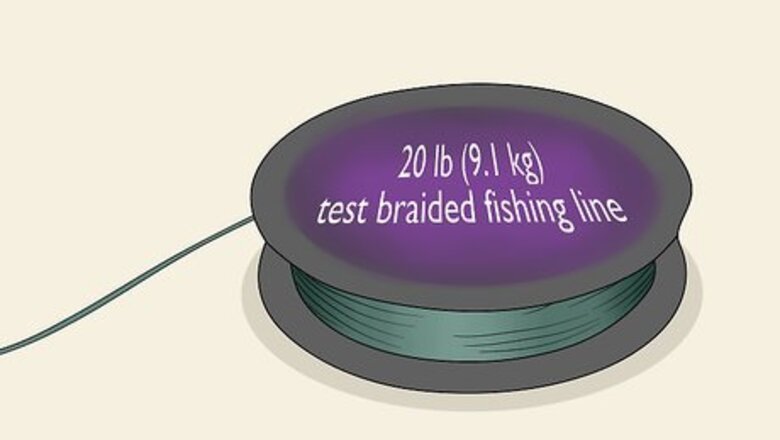
views
Forming the Hair Loop
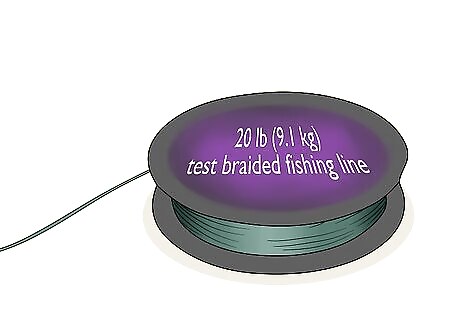
Use 20 lb (9.1 kg) test braided fishing line to make a carp rig. A fishing line’s “test” refers to how much force it can withstand before it breaks. Carp are large and powerful fish so you’ll need a strong fishing line to create your rigs to catch them with. Choose a braided line that is rated to at least 20 lb (9.1 kg) test. You can use line that is rated above 20 lb (9.1 kg) for your carp rigs. Look for a strong braided fishing line at fishing supply stores, at sports and outdoors stores, and online.

Cut a length of fishing line about 12 inches (30 cm) long. Use a knife or a pair of scissors to cut away a length of fishing line to make your carp rig. Try to use 1 clean cut to trim away the line so the braided cord doesn’t fray at the end. You’ll attach the rig to the fishing line on your rod after you form it. If you plan to make more than 1 rig, cut away a few lengths of fishing line to use.
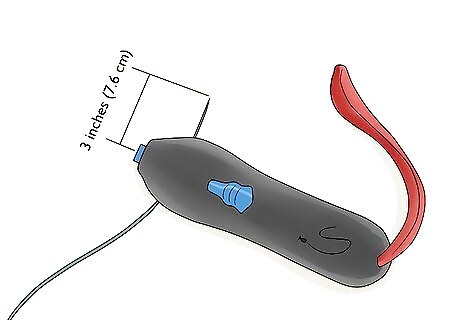
Strip back about 3 inches (7.6 cm) of the coated braid. Take a fishing line stripping tool and insert the end of the line into it. Pull the line through the tool to remove the outer coating of the line so it’s more flexible for your carp rig. You can find stripping tools at fishing supply stores, at sports and outdoors stores, and online.Tip: If you don’t have a stripping tool, you can use the edge of a knife, wire cutters, or even your fingernails to scrape off the outer coating of the braided line.
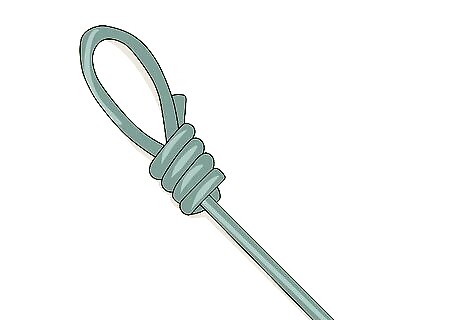
Tie a loop knot on the stripped section to create your hair loop. Form a small loop with the end of the fishing line and tuck the end of the line through the loop. Then, take the end of the line, wrap it around the line just above the loop, and tie a tight knot. Give the end of the loop a good tug to make sure it’s secure. This is a basic loop knot, but you can tie any loop knot that you like, just make sure the loop is secure and the knot won’t come undone. Trim away any extra length of the line from the loop knot.
Attaching the Hook and Bait
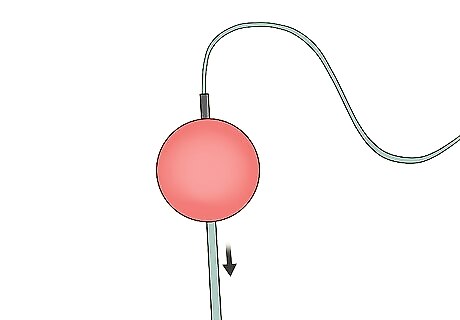
Use a baiting needle to thread the hair through the bait. Carp baits can be made of natural or artificial ingredients and resemble small round balls that are designed to attract carp. Insert the loop into the baiting needle and push the needle through the carp bait that you choose. Leave a small bit of the loop sticking out of the other side of the bait and remove the baiting needle. You can find carp bait at fishing supply stores and online.
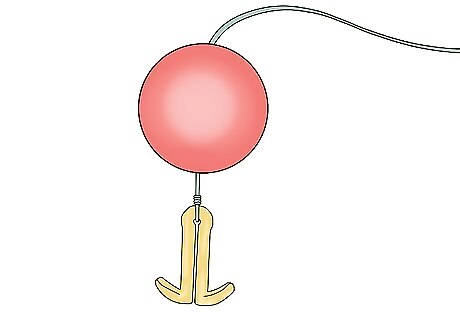
Attach a small bait stop to the hair loop on the other side of the bait. A bait stop is a small piece of plastic that is used to keep the line from slipping through the carp bait. Insert the bait stop into the hair loop sticking out of the end of the carp bait. Pull the line so the bait stop is wedged against the bait and held in place to prevent the loop from sliding through it. Make sure the bait stop is securely fastened to the carp bait. Don’t yank or pull the line or you could break the bait.
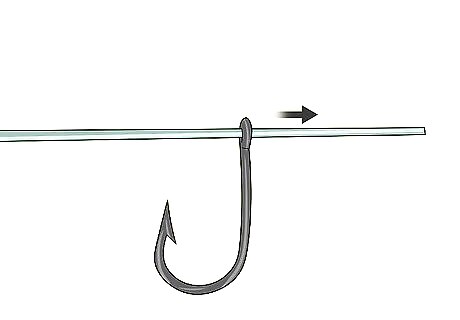
Thread the end of the line through the eye of a size 6 hook. Thread the end of the line opposite from the loop through the eye of a size 6 hook. Position the hook so it’s about 1 inch (2.5 cm) from the bait. A size 6 hook is the perfect size to fit into the mouth of a carp and snag its lip. Look for size 6 hooks at fishing supply stores and online.

Form a knotless knot over the hook to secure it to the line. Keeping the hook about 1 inch (2.5 cm) from the bait, wrap the length of the fishing line around the long end of the hook, starting at the eye and working your way down. Wrap the line around the hook about 8 times, then thread the end of the line back through the eye and pull it tight. Pull the line tight so the knot won’t come undone and the hook will remain in the fixed position. The hook needs to be securely held in place just above the bait.
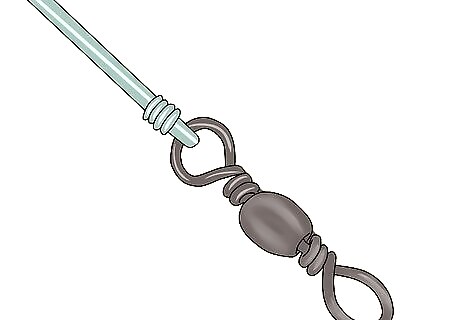
Tie a swivel to the other end of the line with a loop knot. Slide the end of the line opposite from the bait through a small metal swivel. Form a loop with the line and wrap the line over itself about 5 times at the top of the loop. Pull the line tight to form a tight knot to secure the swivel to the rig and trim away the excess line at the knot. The swivel will allow you to connect the carp rig to the line on a fishing pole. Trim the extra length of line from the knots.Fishing Tip: Create a loop about 6 inches (15 cm) from the end of the bait for standard carp fishing. For siltier waters, you may want to tie a loop knot about 8–10 inches (20–25 cm) away from the bait, and for areas with lots of weeds on the bottom, tie a loop knot about 4 inches (10 cm) from the bait.




















Comments
0 comment